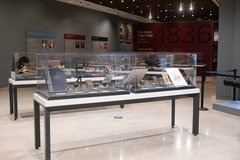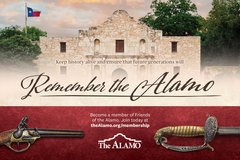During excavations of the unit placed outside the Long Barrack, in the southwestern corner of the Convento Courtyard, a possible fork was recovered. The artifact was encountered in rubble related to the demolition of the east wall of the Long Barrack during the early 1900s.
The artifact appears to be a two-pronged fork that exhibits a cross-hatched carved bone handle. With the exception the of the tines and some damage to the base, the utensil was complete. The metal portion appears to be hand-forged ferrous metal.
The history of the fork is unique in the fact that forks have been documented in the ancient Egyptian, Greek and Roman material culture, but were mostly used as cooking utensils. It wasn’t until the 7th century that forks for dining were seen in the Byzantine Empire and the Middle East. Although there were a few forays of the fork into the European countries, it was not well accepted. It was not until the 1600s that it was more widely accepted, with King Louis XIV banning the presence of pointed knives at the dinner table. Higher class British and Spanish families found forks customary in their homes by the late 1600s.
The popularity of the fork did not increase, especially in the United States, until the mid-1800s. Given that information, it is possible that the fork could be related to the Mission Period. A very similar fork was recovered from the Houston-LeCompt Site in Deleware dating to 1770s.
Additionally, it could be related to the any of the military groups that occupied the grounds after secularization, as two-pronged forks were commonly present in a solider’s military kit during the 1800s. Because the artifact was recovered in the rubble, it is difficult to place an exact date on the item.



